Minor relation, but here are some test results on dual SZA263 reference out of Fluke 5440B board (bought just a board on ebay, to steal a ref).

As you can see, board have two Motorola SZA263, year 1982 vintage, some teal epoxy Fluke PWW resistors. There is nothing else to it, no voodoo slots. Ref assembly sits in isothermal oven box on the main DAC/REF PCBA in calibrator. All oven heaters and control circultry is on mainboard, not here.
This module was unexpectedly easy to get working. Just +30 and -15V supply at the input, and +13V DC output, no whackers with external signaling required.
It also maintains output voltage with reduced supply, down to +23V and -1V.
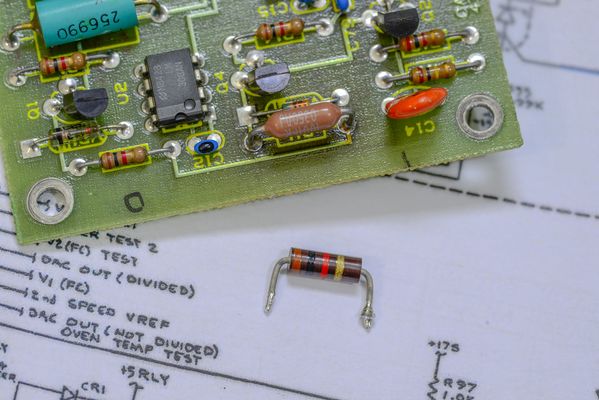
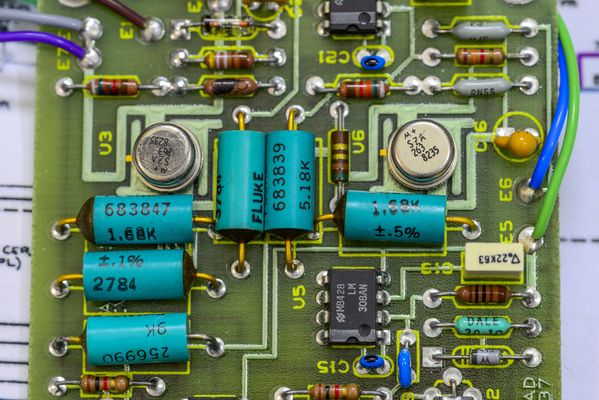
Little trap for young players - Hi sense and Hi force of the output must be connected externally to close the feedback loop.
My love to carbon resistors was rewarded here as well, in shape of R11. Replaced it with 1W metal film 1 Kohm already.

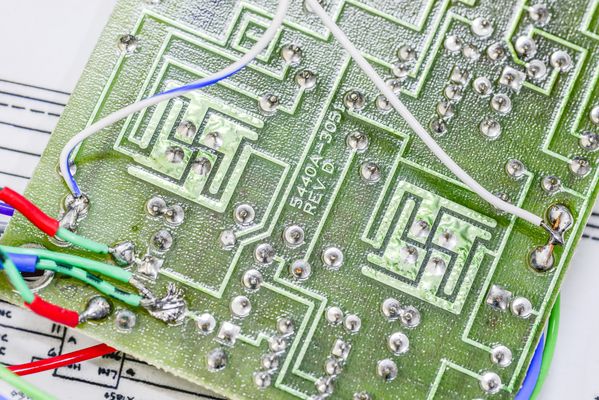

Magic Fluke shapes around SZA263 chips supposed to keep temperatures uniform among all pins. And it's doing that job just fine.
Colorful picture of the running board as well:
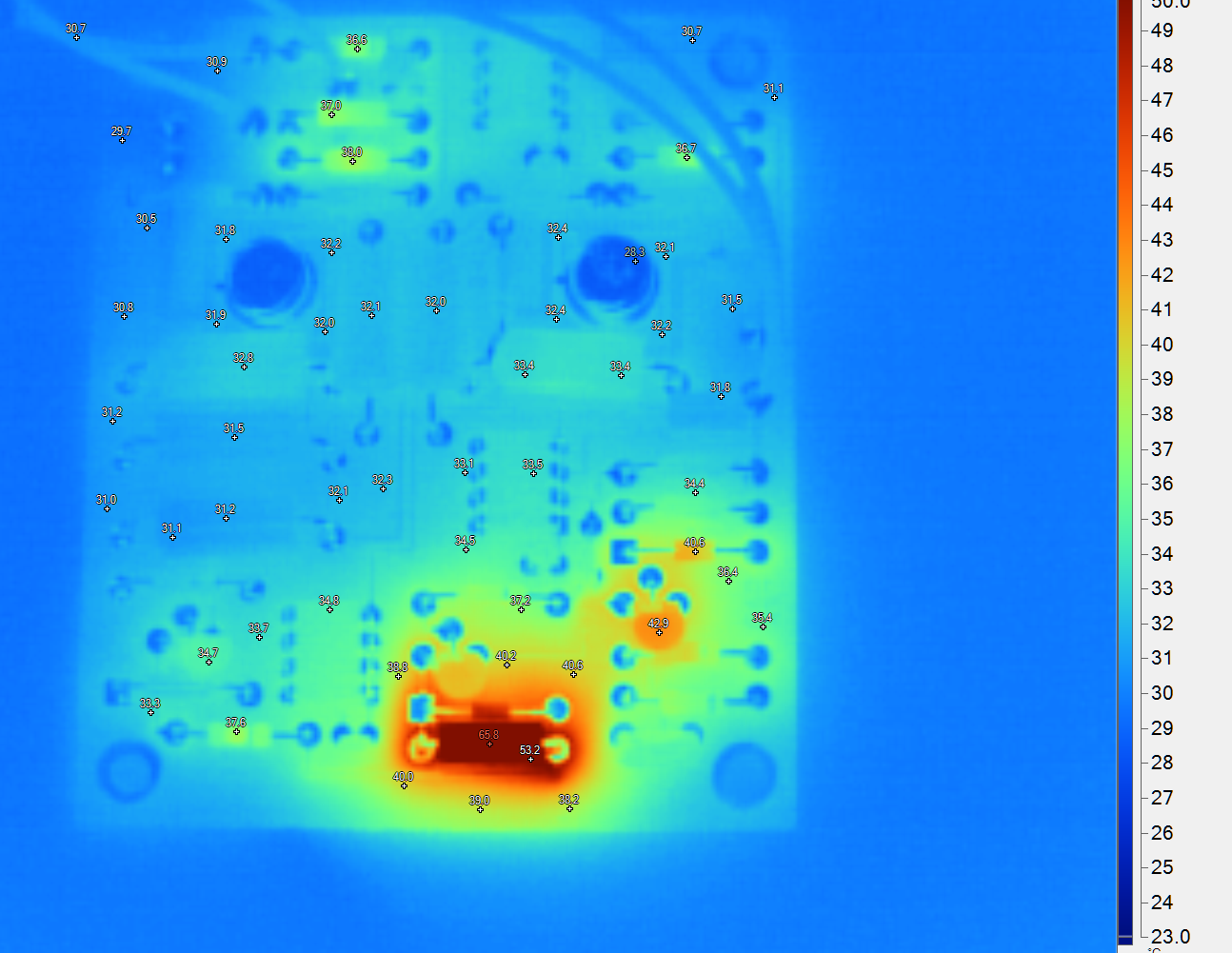
This was taken before replacement of carbon R11 1K resistor.
Results from 8 hour tempco sweep from +18C to +32C:
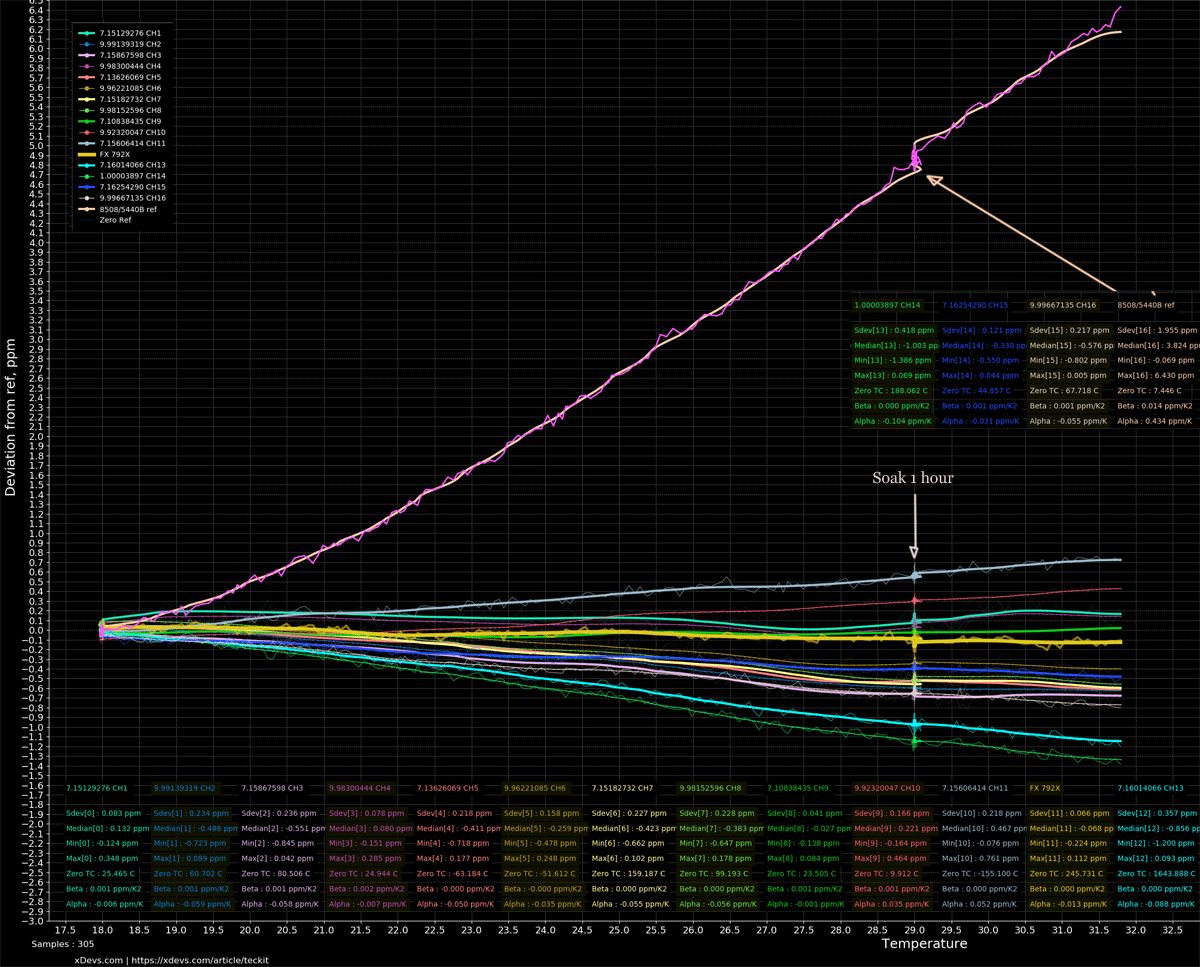
Bunch of lines on other channels are LTZ1000A references.
Overall I'm quite impressed with performance of this cute unheated +13V reference, delivering respectable
<0.45 ppm/K. Heck, that is lower than some of LM399's!
Ref was powered by
Keysight E36312A benchtop linear PSU, with +25.00 and -12V supply voltages. It took about 24mA for positive rail and ~3mA for negative.
With ovenized assembly, like it is used in Fluke 5440 calibrator there is little to worry about tempco, even if oven temperature kept within easy +/-0.1C.
RAW-datafile for those who want split ppms.